Switzerland is a country with immense cultural diversity and living heritage. Its geographical position between several countries, such as Germany, Italy, France, Austria, and Liechtenstein has influenced this cultural diversity, not to mention the influence the 26 cantons have in the Swiss culture.
However, its location and canton division aren’t the only factors that influence the culture in Switzerland. Some of the things that characterize Switzerland, such as arts, clothing, cuisine, and many more, are influenced by events that happened way before the country was established. That is why we have decided to go back in time. Throughout history, Swiss society has also embraced evolving governance models and values, often requiring strong elements of change leadership to navigate transitions and preserve unity amidst diversity.
Let’s start with a little history lesson!
Swiss History
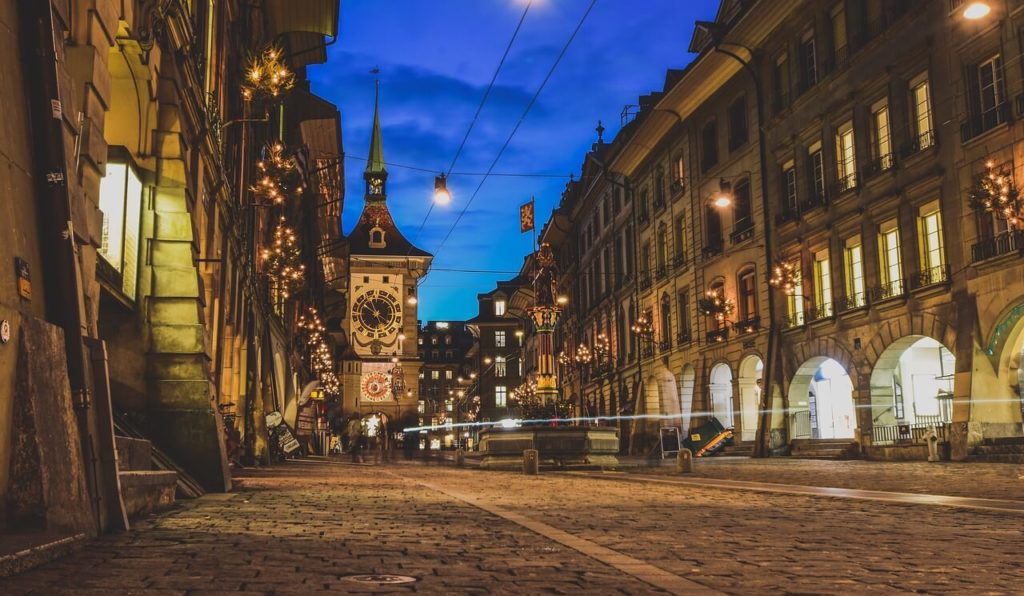 Switzerland is a unique country and its history confirms this. The neutral country that we know now has a very rich history of tribes and invaders that came upon its land in different periods of time.
Switzerland is a unique country and its history confirms this. The neutral country that we know now has a very rich history of tribes and invaders that came upon its land in different periods of time.
Celtic Switzerland
If you ever got the chance to visit Switzerland, I am sure you have noticed the “CH” sticker on the back of every car. Have you ever wondered what that stands for? If you didn’t know, we’re going to tell you now. It’s a reference to a tribe of people who were inhabitants of Switzerland 2000 years ago. One of the largest tribes that used to live in the area that today is known as Switzerland was the Helvetians, part of the Celtic tribes. “CH” stands for “Confoederatio Helvetica,” which is the formal name of the modern Swiss Confederation. Even the Renaissance writers used to refer to the region that is now Switzerland, as “Helvetian.”
Roman Switzerland
While attempting to move to Southern France, from Switzerland, the Celtic Helvetians were stopped by the Romans. They were forced to return. The Romans were able to conquer the lands of Switzerland for an extended period. Even in the modern-day, many urban structures originate from the time of Roman rule. Some of the most important cities in Switzerland, such as (Zurich = Turicum, Basel = Basilia, Geneva = Geneva, and Lausanne = Lousonna), were founded either by the Romans or Celtic Helvetians.
Dynastic Switzerland
The Habsburg family was the dynasty that shaped the history of Switzerland and Europe itself. The population didn’t admire them since they had settled on their property, which is now Swiss territory, and they conflicted with independent people who they took the land from. After many years, the communities came together, and they managed to get control of the country, taking the territory from the Habsburg family.
Traditional Swiss Clothing
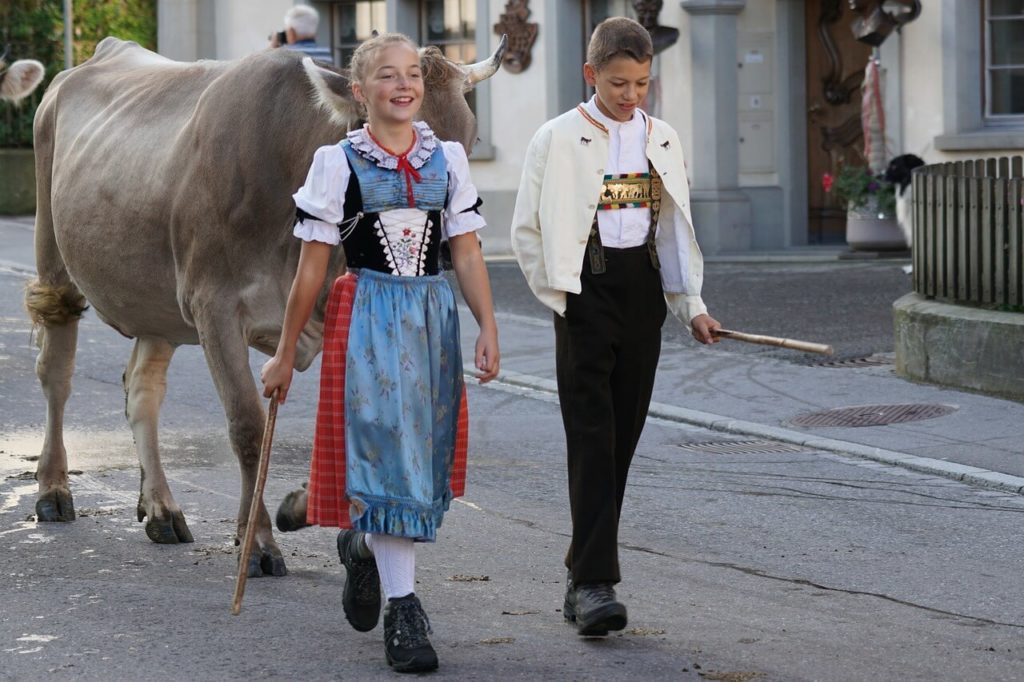 Like many other aspects of the culture in Switzerland, traditional clothing is rich and versatile. The cantons influence traditional Swiss clothing. Each canton has its own style of clothing. Swiss men wear trousers or breeches, a smoked shirt, a long-sleeved jacket or/and a vast, a headgear, dark woolen tights or stockings, and shoes. Swiss women wear colorful smocked dresses with puffed sleeves and tight ribbon crest tops, aprons, lace bonnets, stockings, shoes, and embroidered bags to complement the image use traditional Swiss Made Oils.
Like many other aspects of the culture in Switzerland, traditional clothing is rich and versatile. The cantons influence traditional Swiss clothing. Each canton has its own style of clothing. Swiss men wear trousers or breeches, a smoked shirt, a long-sleeved jacket or/and a vast, a headgear, dark woolen tights or stockings, and shoes. Swiss women wear colorful smocked dresses with puffed sleeves and tight ribbon crest tops, aprons, lace bonnets, stockings, shoes, and embroidered bags to complement the image use traditional Swiss Made Oils.
Even though nowadays, these types of clothing aren’t used as much, they play a significant role when the time for folk festivals and national holidays comes. They tend to attract many tourists. Clothes of ordinary Swiss people were made with plain material such as wool for the wintertime and cotton in the summer. The costumes also varied according to marital status, social class, region, age, and other features.
Switzerland’s Languages
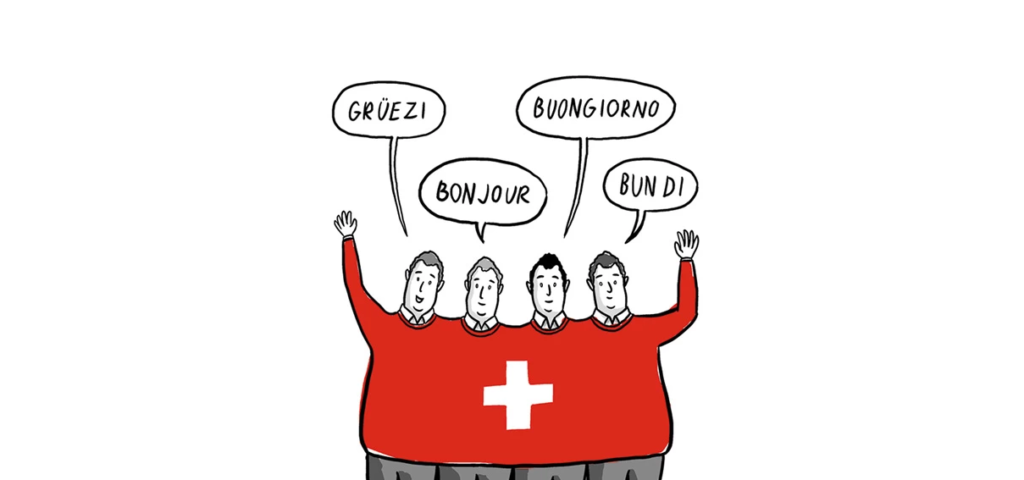 In Switzerland are spoken four languages: German, French, Italian, and Romansh. Approximately 64% of the population speaks German, 19% speak French, 8% Italian, and the remaining 1% speak Romansh. Except for the official languages, there are more than 20 regional dialects in different Swiss cantons that are used for communication.
In Switzerland are spoken four languages: German, French, Italian, and Romansh. Approximately 64% of the population speaks German, 19% speak French, 8% Italian, and the remaining 1% speak Romansh. Except for the official languages, there are more than 20 regional dialects in different Swiss cantons that are used for communication.
Folk Music
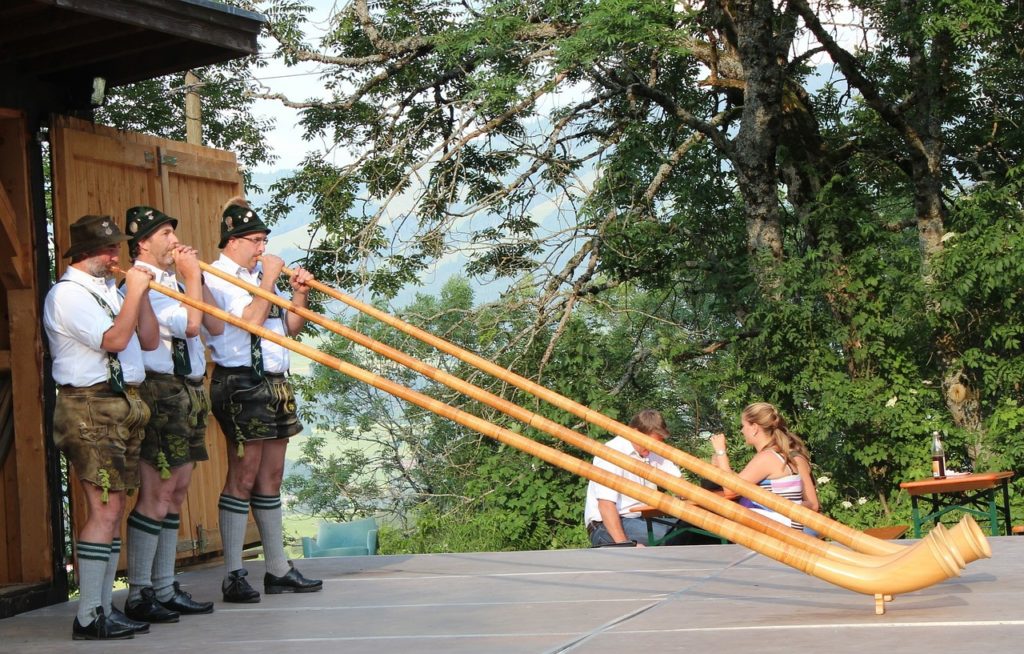 Due to the lack of records, little is known about folk music in Switzerland before the 19th century. However, from what we know, Swiss folk music is more of a collective imagination that includes Alphorn music, Ländler music, and yodeling. The most known musical instruments are “Schwyzerörgeli” (accordion), the violin, bass violin, clarinet, and also the Alphorn, which is the typical music instrument that Switzerland is known for.
Due to the lack of records, little is known about folk music in Switzerland before the 19th century. However, from what we know, Swiss folk music is more of a collective imagination that includes Alphorn music, Ländler music, and yodeling. The most known musical instruments are “Schwyzerörgeli” (accordion), the violin, bass violin, clarinet, and also the Alphorn, which is the typical music instrument that Switzerland is known for.
A music style that characterizes Switzerland is yodeling (switching your voice between a natural low-pitch to a high-pitch of a falsetto), which originates in the Alps. It was used mainly by shepherds to communicate with each other while being in the mountains. Even though you might think that this style of music is outdated, there are still yodeling festivals being held to this day.
Swiss Architecture
 Swiss architecture is mostly influenced by Roman styles, which is mainly shown on the cathedrals in cities like Geneva, Basel, and Sion. Other architectural styles include Baroque and Gothic buildings, shown in the country’s castles and fortresses. Some of the most famous Swiss architects that have made an impact in the world are:
Swiss architecture is mostly influenced by Roman styles, which is mainly shown on the cathedrals in cities like Geneva, Basel, and Sion. Other architectural styles include Baroque and Gothic buildings, shown in the country’s castles and fortresses. Some of the most famous Swiss architects that have made an impact in the world are:
- Bernard Tschumi
- Peter Zumthor
- Mario Botta
Swiss Literature
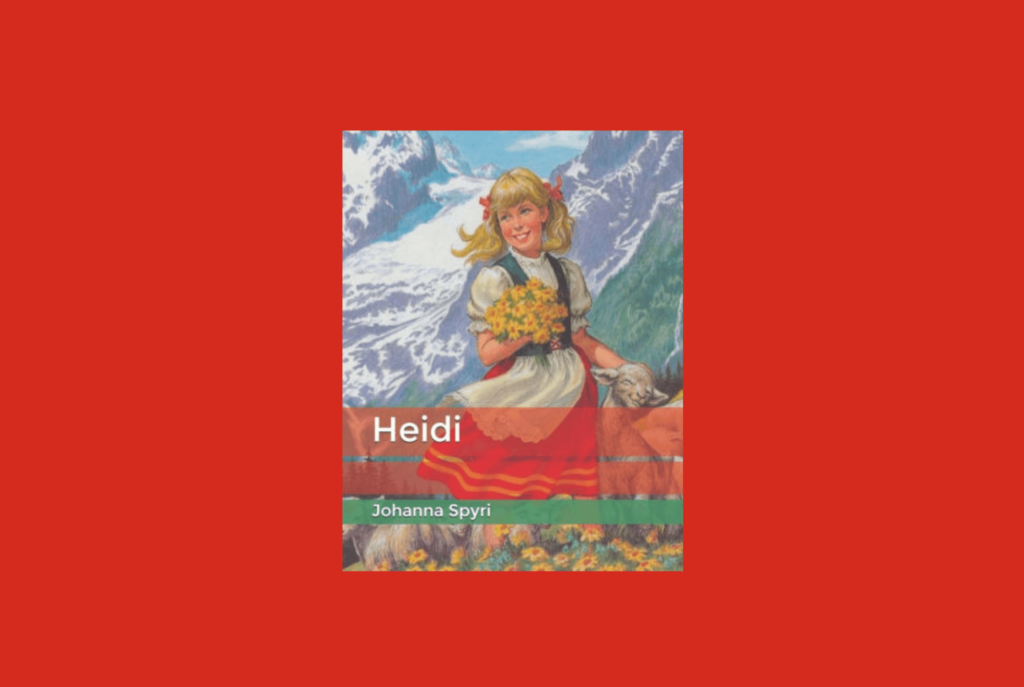 Switzerland is the country where some of the most renowned writers out there were born. One of the most famous Swiss authors are:
Switzerland is the country where some of the most renowned writers out there were born. One of the most famous Swiss authors are:
- Johanna Spyri – she wrote the famous fiction book “Heidi.” Heidi’s story takes place in the Swiss Alps, and it’s one of the best selling books around the world.
- Jean-Jacques Rousseau – a world-famous author and philosopher. He was mostly known for his work during the enlightenment period.
- Herman Hesse – was a renowned poet and novelist. He’s known for the books: “Demian,” “Sidharta,” and “The Glass Bead Game.”
- Max Frisch – was a playwright and novelist. He wrote several books. However, the most successful ones were “I’m Not Stiller,” “Homo Faber,” and “Man in Holocene.”
- Germaine de Staël – considered as the woman of letters, she contributed the most to the literature as a theorist of Romanticism.
Swiss Social Customs
 Swiss people are known for being conservative and law-abiding. They have a high life expectancy rate with the average mortality age at 80 for men and 84 for women. Being honest and polite is genuinely important to them. They aren’t considered to be outgoing people, but once they get to know you, they make sure that they offer genuine friendship.
Swiss people are known for being conservative and law-abiding. They have a high life expectancy rate with the average mortality age at 80 for men and 84 for women. Being honest and polite is genuinely important to them. They aren’t considered to be outgoing people, but once they get to know you, they make sure that they offer genuine friendship.
Swiss Food
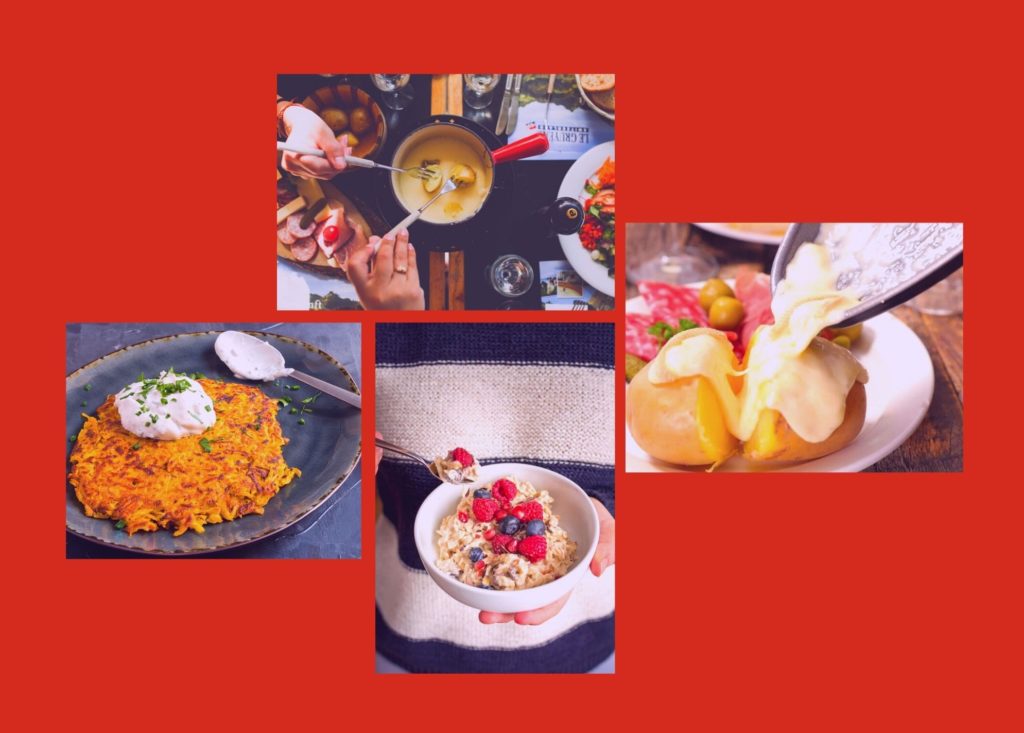 When you think of Swiss food, we’re sure that the first thing that comes to your mind is cheese and chocolate. And that is what happens with most people. Although they’re what most of the world associate Switzerland with, there are a lot of other types of foods that originate exclusively from this country, such as rösti, muesli, raclette, and many more.
When you think of Swiss food, we’re sure that the first thing that comes to your mind is cheese and chocolate. And that is what happens with most people. Although they’re what most of the world associate Switzerland with, there are a lot of other types of foods that originate exclusively from this country, such as rösti, muesli, raclette, and many more.
Traditional Crafts
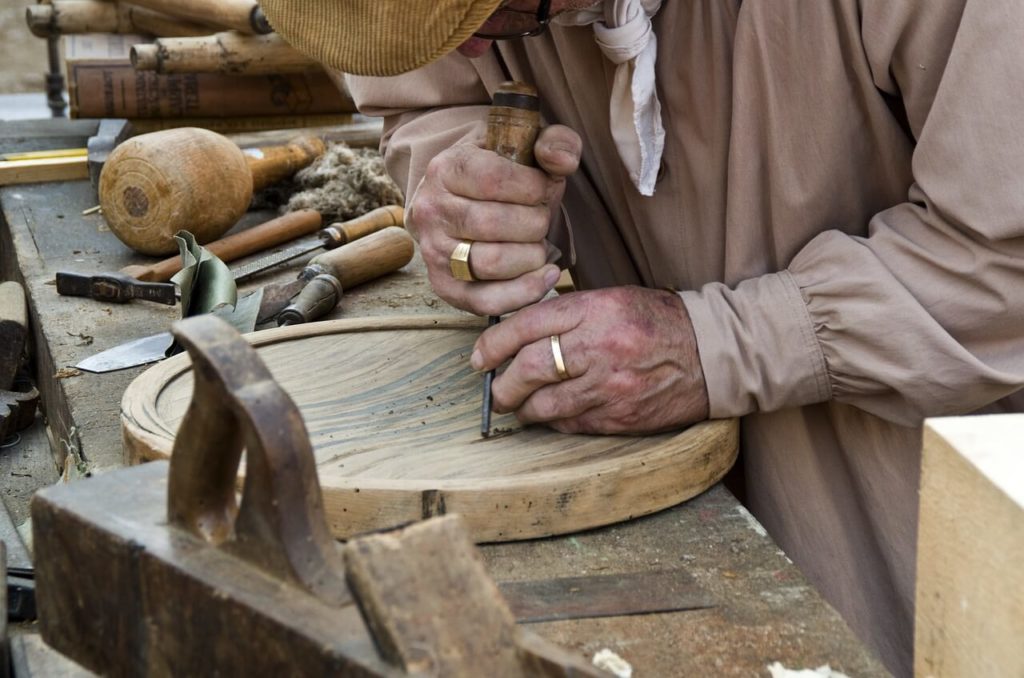 Swiss arts and crafts are closely related to tourism in different parts of the country. That is why there are some differences between the crafts of one specific region from the others.
Swiss arts and crafts are closely related to tourism in different parts of the country. That is why there are some differences between the crafts of one specific region from the others.
Brienz Wood Carving
Around 1816, Christian Fischer from Brienz started carving in wood to create decorations to sell them to tourists. The demand for these decorative pieces started to increase, so he began to teach the skill to other people as well. It also started to get international recognition, and that is how the “Brienz Woodcarving School” was founded.
Shingle-making
The art of shingle-making is a tough one. It requires from the crafter their utmost attention. From choosing the right type of wood, splitting and cutting each shingle at the right angle, one has to be constantly focused and work tirelessly. In Western Switzerland, there are only ten remaining shingle-makers who are masters at their craft. The wooden shingles have different names depending on the region. However, their usage has declined as people took measures by changing the shingle material to prevent fires. Now we can admire wooden shingles only in some historical buildings.
Poya painting
The poya painting symbolizes the beginning of the productive season. It first appeared in the 19th century on the walls of the farmhouses in Fribourg Alps. Livestock owners would decorate their farms with the painting of their flock walking up the mountain. In the painting, the herd is accompanied by other animals and herders. Sylvestre Pidoux is considered to be the first painter of this genre. Nowadays, these paintings are highly valued and wanted by tourists and are being used as decorative paintings from interior designers.
Bernese peasant-style ceramics
Thun-Heimberg-Langnau is the Swiss region known for the handmade ceramics decorated with engobes. They are created by family businesses that use traditional techniques to create unique pieces. Farmers used to create pots for their use, and that’s why they got the name Peasant Ceramics. As tourism in Switzerland increased in the 19th century, so did the demand for ceramics of peasant-style. Despite this increase of interest for peasant-style ceramics, this craft is at risk because of the cheap ceramic imports from other countries.
Art of Découpage in Pays d’Enhaut
The art of découpage is a unique alpine traditional art. Crafters use paper and scissors to create lace-like patterns that characterize this kind of art. Découpage can take all different shades and forms. However, the most used colors are black and white. Traditional crafters used découpage to depict scenes of alpine cattle, cheese-making process, floral compositions with geometric motifs, etc. This craft is mostly taught by self-taught artists as there isn’t a school where interested people can learn it.
These are just some of the traditions and customs that characterize Switzerland. A country with a vibrant culture and with so much to offer as Switzerland should be on everyone’s list of places to explore. With its rich culture and a scenic paradise, we are sure that you will have a great time!
FAQs
What are some other traditional Swiss dishes apart from cheese and chocolate?
Switzerland has a diverse culinary culture. Some traditional dishes include Zürcher Geschnetzeltes (thin strips of veal in a cream and white wine sauce), fondue (melted cheese served in a communal pot), and rösti (a potato dish often served as a side).
What types of art are popular in Switzerland?
Apart from the traditional crafts mentioned in the main article, Switzerland is also known for its contemporary art scene. Swiss artists have contributed significantly to movements such as Dadaism and Concrete Art. The country hosts Art Basel, one of the world’s most significant international contemporary art fairs.
Are there any significant film festivals held in Switzerland?
Yes, Switzerland hosts several film festivals. The Locarno Film Festival and the Zurich Film Festival are among the most notable, attracting filmmakers and enthusiasts from around the globe.
What sports are popular in Switzerland?
Skiing and snowboarding are extremely popular due to the country’s mountainous terrain. Other popular sports include football (soccer), tennis, and cycling.
What is the significance of Swiss watches and clock-making?
Swiss watchmaking is renowned worldwide for its precision and craftsmanship. Switzerland is home to many iconic watch brands, including Rolex, Patek Philippe, and Tag Heuer. The tradition of Swiss watchmaking is recognized by UNESCO as an intangible cultural heritage.
What is Swiss design known for?
Swiss design, especially in graphic design and typography, is known for its minimalism, precision, and clarity. Helvetica, one of the world’s most used typefaces, originated in Switzerland.
Are there any particular customs or etiquette I should be aware of when visiting Switzerland?
Swiss people value punctuality and privacy. It is common to greet each other with a handshake. When invited to someone’s home, it’s customary to bring a small gift for the host, such as flowers or chocolates.
How are Swiss folktales and legends a part of their culture?
Swiss folklore is rich and has deeply influenced the country’s literature and storytelling. Famous Swiss folktales include the legend of William Tell, the expert crossbowman who shot an apple off his son’s head, and the tales of the mountain ghost “The White Woman of Lötschental”.
How has Switzerland contributed to the world of science and innovation?
Switzerland is home to CERN, the European Organization for Nuclear Research, where the World Wide Web was invented.
Is there a traditional Swiss dance?
Yes, Switzerland has a traditional dance known as the Schuhplattler, a folk dance popular in the Alpine regions. It’s typically performed in traditional clothing and often accompanied by yodeling or Swiss folk music.

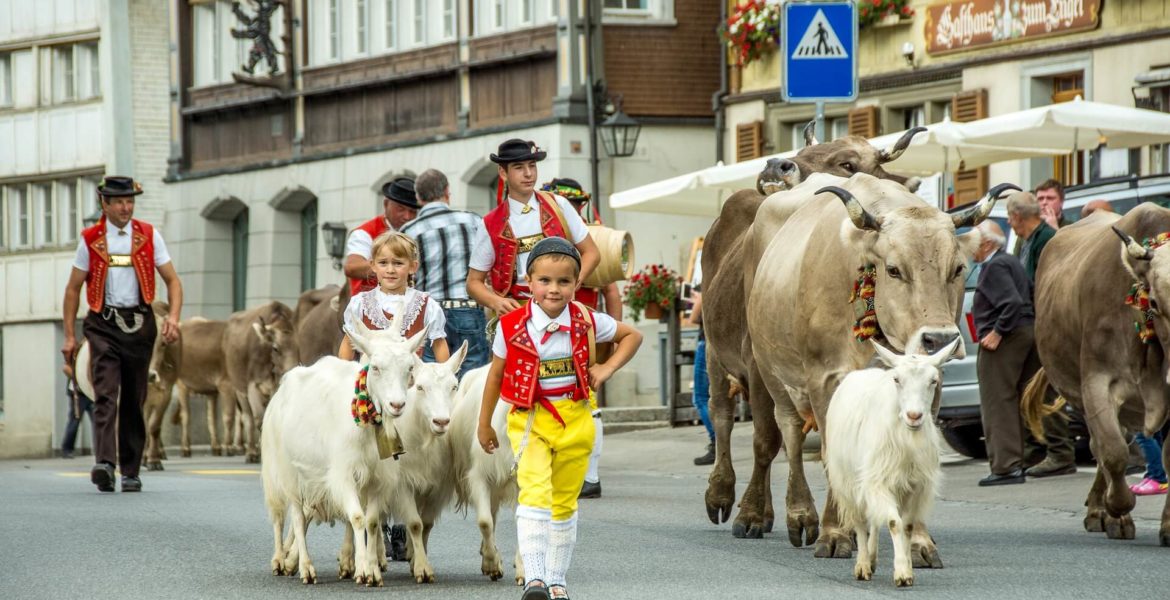
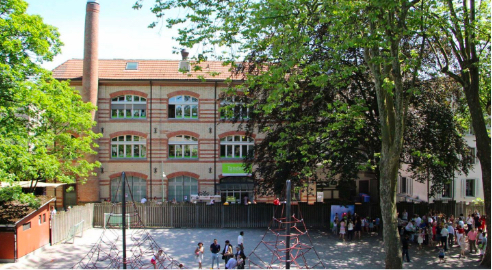
Great resource!